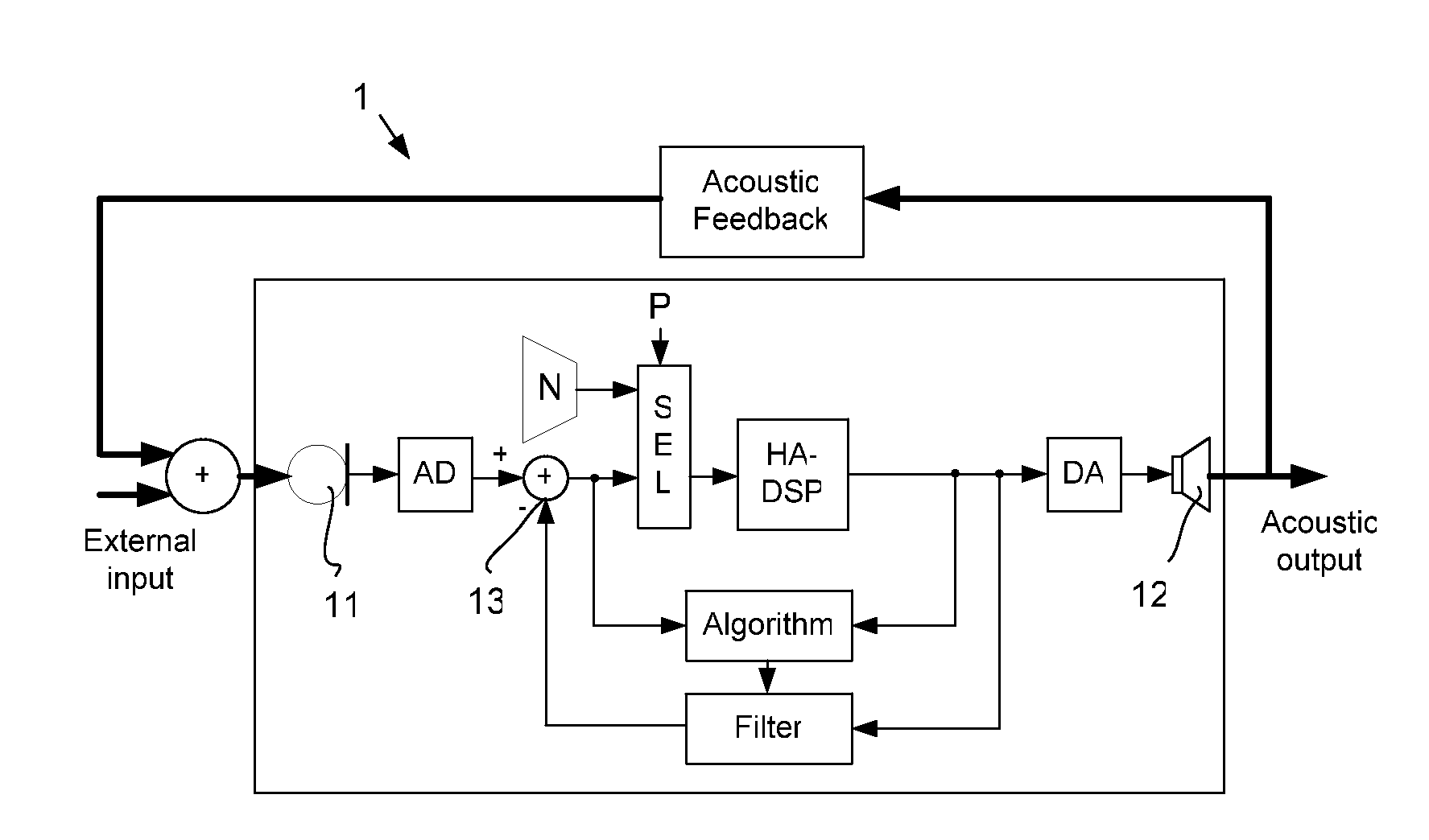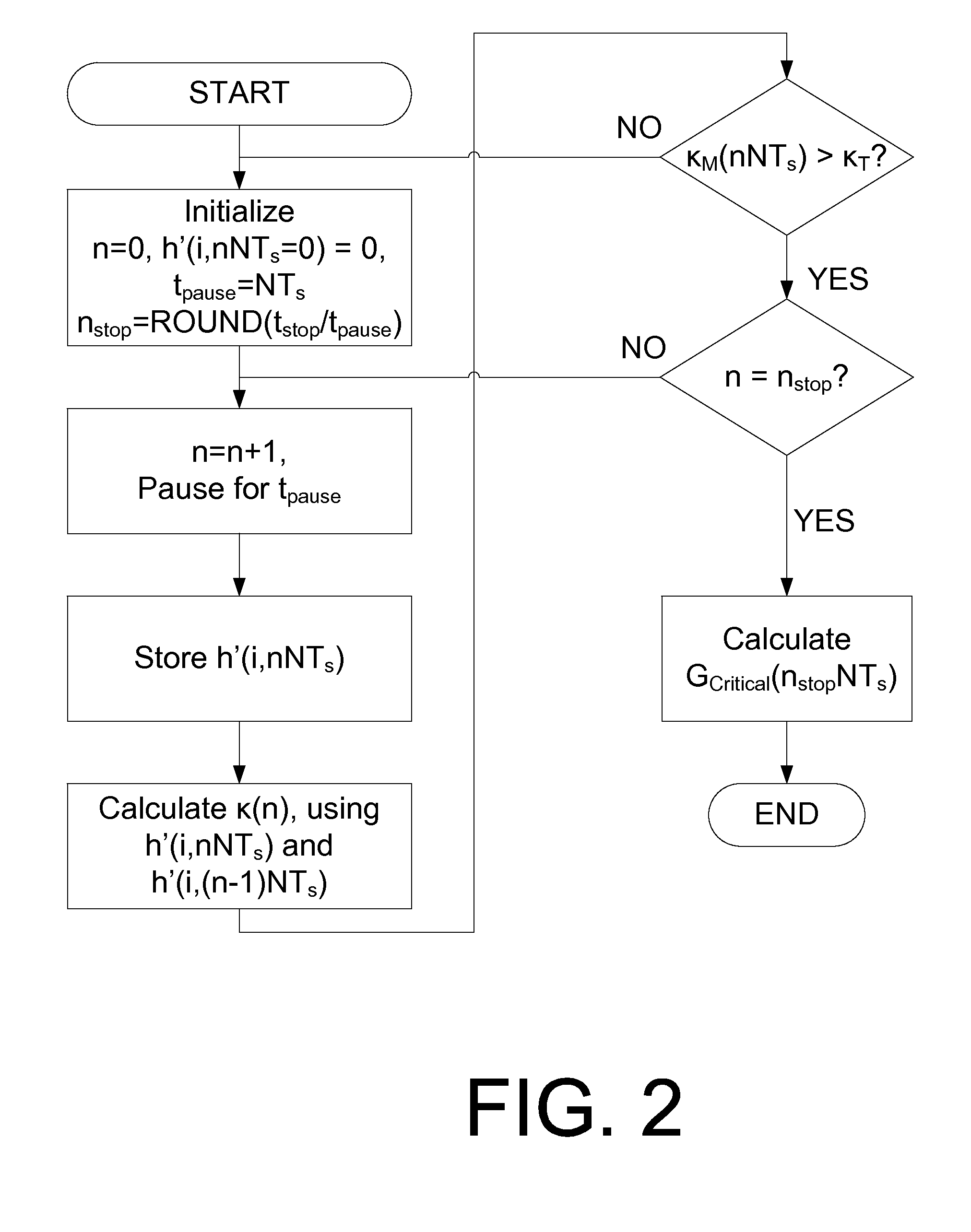Method for monitoring the influence of ambient noise on stochastic gradient algorithms during identification of linear time-invariant systems
a stochastic gradient and ambient noise technology, applied in speech analysis, instruments, sound producing devices, etc., can solve the problems of significant contamination of the desired audio input signal, distorted estimation of the acoustic feedback path, and sacrifice of gain at and around critical frequencies
- Summary
- Abstract
- Description
- Claims
- Application Information
AI Technical Summary
Benefits of technology
Problems solved by technology
Method used
Image
Examples
example
Measurement of Critical Gain During Fitting
[0048]Consider a threshold level kT for the case U(k)=V(k), k=0, 1, 2, . . . , M, given by
κT≡μ02
[0049]And the initial condition: Filter coefficients h′(i,nNTs=0)=0. That is, the AFC filter coefficients are preferably set to zero at the beginning of the measurement. An example of an initial step size μ0 is 1 / 32.
[0050]To reliably detect a border between an acceptable and an unacceptable amount of ambient noise, the feedback path is considered to be steady state during the measurement procedure.
Measurement Procedure:
[0051]FIG. 2 shows an algorithm for measuring critical gain in a hearing instrument. In an embodiment, the algorithm comprises the following steps (which are correspondingly illustrated in FIG. 2):[0052]0. Start: Set n=nstart0. Initialize filter coefficients h′(i,nNTs=0)=0. Store ambient noise threshold level kT. Set stop at iteration nstop=ROUND(tstop / tpause), where tpause=NTs, Ts is the sampling period and NεN (integer). Set step...
PUM
 Login to View More
Login to View More Abstract
Description
Claims
Application Information
 Login to View More
Login to View More - R&D
- Intellectual Property
- Life Sciences
- Materials
- Tech Scout
- Unparalleled Data Quality
- Higher Quality Content
- 60% Fewer Hallucinations
Browse by: Latest US Patents, China's latest patents, Technical Efficacy Thesaurus, Application Domain, Technology Topic, Popular Technical Reports.
© 2025 PatSnap. All rights reserved.Legal|Privacy policy|Modern Slavery Act Transparency Statement|Sitemap|About US| Contact US: help@patsnap.com



